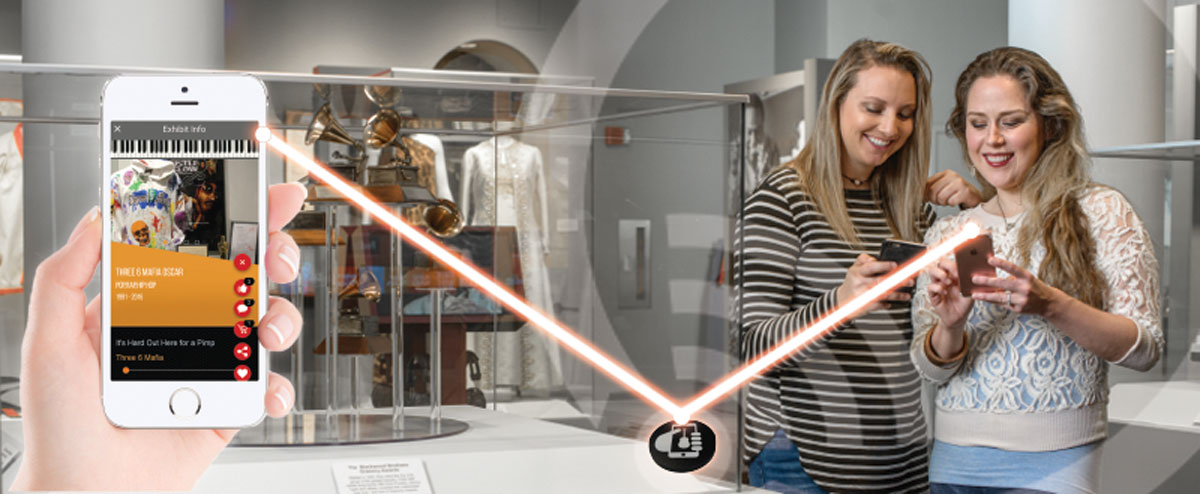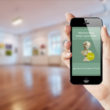4 Ways Museums Are Expanding Customer Interaction with Beacon Technology
3073 Views
In the land of Snapchat, Words with Friends, and virtual, well, everything, museums are challenged with attracting patrons and promoting repeat visits. Recent reports from the National Endowment for the Arts recorded an 8 percent drop in the number of US adults who visited art museums in the past two decades, as well as a particularly sharp decline in museum-going rates among Millennials.
Museum decision makers should be giving thoughtful consideration to what’s next in their strategy to attract visitors and deliver a memorable, exciting customer experience. How can they use the resources they already have, and add in elements that makes a trip to the museum high on everyone’s list? The easy answer is location intelligence.
Everyone, Millennials and the upcoming Centennials especially, uses technology every day, all the time. There are few daily activities that can’t be accomplished or assisted by technology. It seems that smartphones are extensions of the majority of consumers’ hand nowadays. Instead of competing with potential patrons’ smartphone obsession, capitalize on it to create a unique, enriching customer experience. This begins with beacon technology in museums.
What is Beacon Technology?
Beacons are small devices that are basically tiny computers. They can be placed almost anywhere inside or outside. When a person comes into a beacon’s proximity (which is from 5 to 150 feet) the beacon connects and sends information to his or her smartphone. Companies use beacons to accomplish a variety of goals, from enticing customers to enter their establishments, to apprising them of information and promotions, to creating helpful surveys and fun games, and more.
The retail industry was the first to welcome beacon technology and location intelligence. However, museums and other attractions are quickly realizing how they can dramatically benefit from this technology in expanding stronger customer interactions and attracting and delighting more visitors. Marrying the digital and physical space into a single, unique visit drives a pleasurable customer experience, promotes additional spending and creates loyalty.
Here are 4 ways beacon technology helps museums expand customer interactions:
Provides visitors a way to experience museums at their own pace.
Have you ever been in a museum and seen an exhibit that doesn’t interest you? It’s a fact that not every patron is going to enjoy every exhibit. By using beacons with your exhibits, museums allow visitors the ability to control their time and experience it at their own pace, spend more time on the sections that interest them and less on the ones that don’t. There is no waiting for a recording to stop explaining an exhibit that holds no interest in order to move on. When a visitor moves away from one beacon and in proximity to the next, the second one picks up and continues the museum’s story. This customizes the user experience so the museum goer is happy and satisfied with their time spent there.
Offers “behind the scenes” exhibit information.
Museums are physical space with set restrictions. The digital world doesn’t have that problem. Visitors can access additional information, fun stories, great music, and other relevant information tied to an exhibit, right on their smartphones. This is courtesy of beacon technology. Museum planners can create interesting information that could otherwise not be shared with their visitors due to space issues, and add it to their exhibit via the beacons. This extra information and insight enriches the customer experience and transforms the visit into a more powerful, three-dimensional adventure.
Eliminates the “nasty headphone” frustrations.
Using traditional headphones supplied by a museum is a pain. They can be expensive and difficult to maintain. Who wants to be grossed out by using headphones that a thousand other people have worn? That is NOT a sublimely happy customer experience.
Beacon technology leverages patrons’ favorite thing: his or her cell phone. “Pings” from the beacon hit the guests’ smart phones, and they can interact with the information, click form more in-depth stories and history and listen to songs or anything else that is relevant to the exhibit. Instead of fighting with old, outdated headphones, visitors are able to connect with the museum’s offerings and enjoy a smooth experience with a trusted piece of equipment they know how to use.
Creates gamification and other interactive opportunities.
In the age of Candy Crush and Super Mario, people are tuned into games. Remember how obsessed everyone was with Pokémon Go? Why should museums miss out on this craze? In addition to offering a completely immersive, customized customer experience, location intelligence courtesy of Beacon technology in museums can be set up to interact with visitors using games. Trivia about each exhibit is a fun way to engage patrons, and choosing the best picture that describes an exhibit are two of many ideas museums can leverage gamification to benefit their guests’ visits. This type of interactive experience helps visitors own their experiences, and easily share them with friends across social media channels. Which, after all, is what humans love to do!
An extra benefit gamification offers museums is the gathering of intel on visitors. Which of your exhibits ended up catching and holding the most attention? How high was the participation rate in the game? These analytics are essential in developing in increasing success. Museum decision makers can leverage it to create new exhibits, drive future attendance, and create ongoing customer satisfaction.
Today’s museums are faced with far more competition for peoples’ time and money than ever before. Millennials especially are a challenging segment of the population to attract and engage, and trying to tear them away from their smartphones is a futile endeavor. Beacon technology in museums is a catalyst toward building a modern, exciting customer experience using the physical and digital space. The benefits bring about a great return on investment in terms of more visitors, more dollars spent per visitor, and an increase in repeat visits.
Have questions about how using beacon technology in museums can help you increase your visitors and enrich their experience? Contact ThinkProxi today and one of our experienced professionals will be happy to consult with you on your specific needs.

